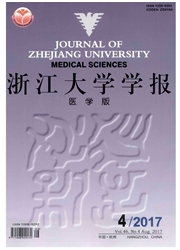

 中文摘要:
中文摘要:
帕金森病(Parkinson’s disease,PD)的主要病理特征是中脑黑质致密部多巴胺能神经元的选择性变性、死亡,以及在残存的神经元胞浆中出现以α-突触核蛋白(alpha-synuclein,α-SYN)为主要成分的淀粉样蛋白包涵体——Lewy小体。已有大量研究证据表明,α-SYN的异常聚集在PD的发病和Lewy小体的形成中发挥了关键作用,而parkin、synphilin-1、14-3-3、agrin、tau等蛋白通过与α-SYN相互作用影响了α-SYN的异常聚集。
 英文摘要:
英文摘要:
Parkinson's disease (PD) is characterized pathologically by the relatively preferential loss of dopaminergic neurons with resultant depletion of striatal dopamine and presence of Lewy bodies mainly composed by alpha-synuclein (α-SYN) in the remaining neurons in the substantia nigra. A lot of evidence suggests that the aggregation of α-SYN play an essential role in the pathogenesis of PD and formation of Lewy body. Increasing findings have implicated that some proteins,including parkin,synphilin-1,14-3-3,agrin and tau,interact with α-SYN and are involved in the abnormal aggregation of α-SYN.
 同期刊论文项目
同期刊论文项目
 同项目期刊论文
同项目期刊论文
 期刊信息
期刊信息
